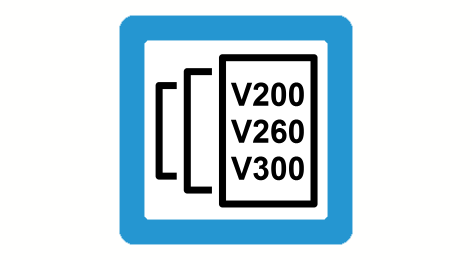Programming or description of the kinematic chain
Notice

All components of the kinematics are described in the same coordinate system (PCS).
Release Note

The syntax of the CNC Builds V2.11.20xx or V2.11.28xx is used in list files in this documentation.
This syntax changed for transformation configurations as of Build V3.00.
For CNC Builds > V3.00 P-CHAN-00262 must be absolutely assigned the transformation ID 91.
Old syntax: for CNC Builds V2.11.20xx and V2.11.28xx | New syntax: for CNC Builds as of V3.00 and higher: |
kinematik[91].zero_orientation[0] 0 kinematik[91].zero_orientation[1] 0 … |
trafo[0].id 91 trafo[0].zero_orientation[0] 0 trafo[0].zero_orientation[1] 0 … |
Number of axes
The number of axes is specified by:
# typical CA machine: XYZCA
kinematik[91].number_of_axes 5
Axes
Each of the axes is defined by the following characteristics.
Field | Description |
type | Linear axis (1) or rotary axis (2); see P-AXIS-00018 |
Orientation | Direction vector of axis, not zero vector |
Point | Interpolation point, not relevant for rotary axes |
The individual axes are specified by:
# Define X axis
kinematik[91].axis[0].type 1
kinematik[91].axis[0].orientation[0] 1
kinematik[91].axis[0].orientation[1] 0
kinematik[91].axis[0].orientation[2] 0
# Define Y axis
…
# Define Z axis
…

# Define C axis
# points in Z direction and crosses
# point (800, 1200, 0)
kinematik[91].axis[3].type 2
kinematik[91].axis[3].orientation[0] 0
kinematik[91].axis[3].orientation[1] 0
kinematik[91].axis[3].orientation[2] 1
kinematik[91].axis[3].point[0] 800
kinematik[91].axis[3].point[1] 1200
kinematik[91].axis[3].point[2] 0

# Define A axis
kinematik[91].axis[4].type 2
…

Axis sequence
The sequence of the axes in the kinematic chain must be specified. This sequence can, but need not, match the sequence of axis definitions. For example, it is then possible to place rotary axes at the start of the kinematic chain to simulate a rotary axis in the workpiece table. See Section Setting the programming mode.
kinematik[91].chain[0] 0
kinematik[91].chain[1] 1
kinematik[91].chain[2] 2
kinematik[91].chain[3] 3
kinematik[91].chain[4] 4
where "chain[i] = j" means that the i-th position in the kinematic chain is occupied by the j-th axis.
Attention

Universal Kinematics (ID91) may only be activated if all participating axes exist in the channel. Otherwise, an error is output.